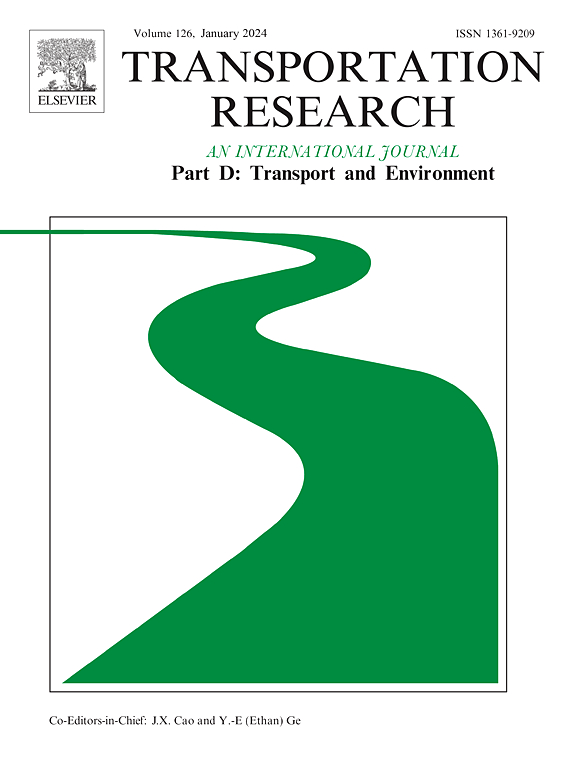Paths of progress: Forecasting global electric vehicle demand amidst demographic and economic growth
IF 7.7
1区 工程技术
Q1 ENVIRONMENTAL STUDIES
Transportation Research Part D-transport and Environment
Pub Date : 2025-08-05
DOI:10.1016/j.trd.2025.104928
引用次数: 0
Abstract
This study estimates future motorization levels of light-duty vehicles (LDVs) and electric vehicles (EVs) under different economic growth scenarios and demographic trends, particularly the working-age population using publicly available data. By 2035, global LDV sales will range between 93–124 million, with China leading (27–35 million), followed by South Asia/Oceania (16–28 million), Middle East/Africa, and South America. If countries meet their electrification targets, global EV demand will reach 59–73 million. Internal Combustion Engine vehicle (ICEV) sales are projected to remain stable, with over 70 % of 2035 sales replacing retiring vehicles, while 80 % of EV sales contributing to new mobility growth. ICEV fleets will expand until the mid-2040 s, especially in emerging markets, where EVs add to total stock rather than replacing ICEVs. In Europe and US, ICEVs will be substituted more rapidly. The study underscores the need for improved ICEV fuel efficiency, electricity grid decarbonization, and strong EV policies to meet climate goals.
进步之路:在人口和经济增长的背景下预测全球电动汽车需求
本研究使用公开数据估计了在不同经济增长情景和人口趋势下,特别是工作年龄人口下轻型汽车(ldv)和电动汽车(ev)的未来机动化水平。到2035年,全球LDV销量将在9300 - 1.24亿辆之间,其中中国领先(2700 - 3500万辆),其次是南亚/大洋洲(1600 - 2800万辆)、中东/非洲和南美。如果各国实现其电气化目标,全球电动汽车需求将达到5900万至7300万辆。预计内燃机汽车(ICEV)的销量将保持稳定,2035年超过70%的销量将取代退役汽车,而80%的电动汽车销量将为新的出行增长做出贡献。到2040年代中期,电动汽车的数量将会增加,特别是在新兴市场,电动汽车将增加总库存,而不是取代电动汽车。在欧洲和美国,电动汽车的替代速度将更快。该研究强调了提高电动汽车燃油效率、电网脱碳和强有力的电动汽车政策以实现气候目标的必要性。
本文章由计算机程序翻译,如有差异,请以英文原文为准。
求助全文
约1分钟内获得全文
求助全文
来源期刊
CiteScore
14.40
自引率
9.20%
发文量
314
审稿时长
39 days
期刊介绍:
Transportation Research Part D: Transport and Environment focuses on original research exploring the environmental impacts of transportation, policy responses to these impacts, and their implications for transportation system design, planning, and management. The journal comprehensively covers the interaction between transportation and the environment, ranging from local effects on specific geographical areas to global implications such as natural resource depletion and atmospheric pollution.
We welcome research papers across all transportation modes, including maritime, air, and land transportation, assessing their environmental impacts broadly. Papers addressing both mobile aspects and transportation infrastructure are considered. The journal prioritizes empirical findings and policy responses of regulatory, planning, technical, or fiscal nature. Articles are policy-driven, accessible, and applicable to readers from diverse disciplines, emphasizing relevance and practicality. We encourage interdisciplinary submissions and welcome contributions from economically developing and advanced countries alike, reflecting our international orientation.

 求助内容:
求助内容: 应助结果提醒方式:
应助结果提醒方式:


